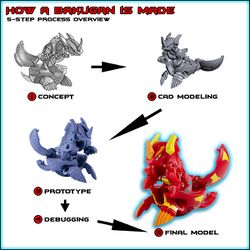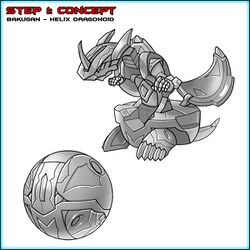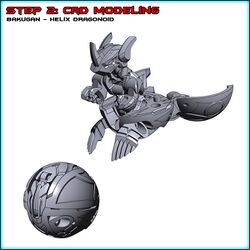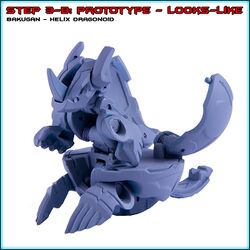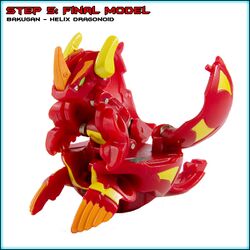BakuBlog/Bakugan Dimensions Issue 10
As your insider source for everything Bakugan, we have an exclusive special treat inside this week's BakuBlog: How a Bakugan is Made! We are going to share the exciting step-by-step process of how your favorite Guardian Bakugan become a reality in your ar.senal. Get ready to gear up for this insider information, as the amazing process of how every Bakugan is about to be revealed!
Every Bakugan that is created goes through the same process until it is made into the Final Model, which is what is produced and sold at your local Bakugan retailer. The whole creation process has five major steps: Concept, CAD Model, Prototype, Debugging, and then the Final Model. Each Bakugan averages about 6 months from the first step to the last and incorporates a worldwide team of designers, engineers, planners, production, quality assurance, packaging and marketing individuals. A lot of intricate details and processes go into developing a Bakugan, so we'll just cover the basics.
Step 1: Concept
The Concept stage is where each Bakugan is virtually born. The Bakugan design team brainstorms to come up with new ideas for each new season. Concept drawings are made for each Bakugan after some final brainstorming, leading into the next step…
Step 2: CAD Model
Once the concept phase is completed, the Bakugan is further conceptualized into a 3-D computer generated model called a CAD model. This 3-D model is a precursor for the next stage…
Step 3: Prototype
The CAD model is used to create a real life replica of the Bakugan using a process called stereo lithography. This prototype model may be a translucent clone which is known as a “works-like” model. The “works-like” model is used to test and improve the functionality of the Bakugan. In most cases, a “looks-like” model is made which is more of a final stage of prototyping. This gray Bakugan figure has more detail and is closer to the desired Final Model. The “looks-like” model is also known as a “tooling” model because it is used in the creation of the proper tools that will physically make the Final Model. Interesting fact: several prototype models may be made for a single Bakugan until it is just right.
Step 4: Debugging
Next, each Bakugan goes through a debugging process which will refine the functions of the Bakugan to make sure they work properly, such as opening and closing correctly. Once perfected, it is time for the Final Model to be made!
Step 5: Final Model
Now that the Bakugan has carefully made it through all the previous steps, it is ready for the Final Model stage. The manufacturing warehouses go into full production mode and begin popping out Bakugan like they are hot pancakes!
As a brawler, now you are equipped with the knowledge of what goes into creating your ever-triumphant arsenal of warriors and pals.
